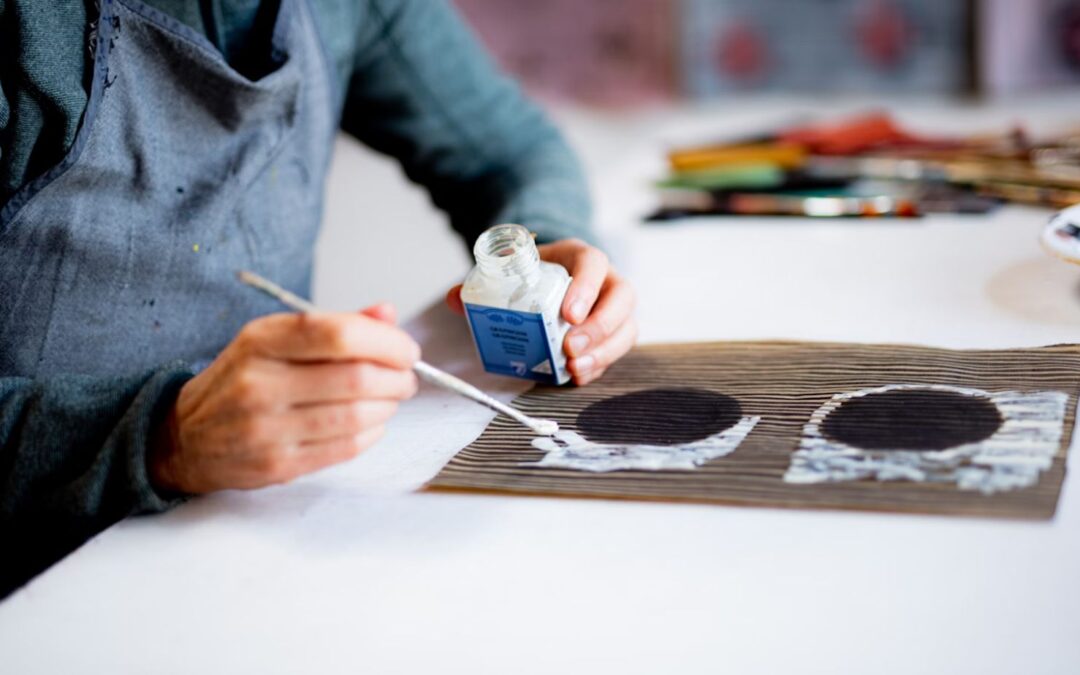At the core of every great work of art lies an immense reservoir of passion and creativity. Whether it’s painting, sculpting, writing, or performing, artists express their inner worlds, emotions, and ideas through their chosen mediums. The journey of creation is a deeply personal experience, fueled by a unique blend of inspiration, hard work, and dedication. But what exactly drives this creative process? And how can artists sustain the passion that fuels their art over time?
In this blog, we’ll explore the nature of an artist’s passion and creativity, and how they play a critical role in shaping the artistic journey.
The Spark of Passion
Passion is the driving force behind all great art. It’s that intense feeling of love and enthusiasm for one’s craft that pushes an artist to continually create and refine their work. Passion provides the energy needed to wake up early, stay up late, and work through creative blocks. It is what turns a simple idea into a masterpiece.
For many artists, passion is deeply personal. It can stem from life experiences, emotions, or a desire to explore and express a vision. This deep, internal fire is what drives them to pursue their artistic goals, regardless of external validation or recognition. Artists who are passionate about their work often create from a place of authenticity, which resonates with audiences on a deeper level.
However, passion alone is not always enough. It must be paired with discipline and dedication to truly bring an artist’s vision to life. Passion is the fuel, but creativity is the vehicle that allows artists to bring their ideas into the world.
The Flow of Creativity
Creativity is the process through which an artist turns passion into something tangible. It’s the ability to generate new ideas, make connections between seemingly unrelated concepts, and push boundaries to create something original. Creativity is fluid, ever-changing, and constantly evolving, making it a vital element in an artist’s work.
Many artists experience creativity as a state of flow—a mental space where time seems to disappear, and they are fully absorbed in the act of creation. In this state, ideas come naturally, and artists feel in tune with their work. Achieving this flow state can be unpredictable, as creativity doesn’t always operate on a schedule.
However, creative blocks are also a natural part of the artistic process. These periods of stagnation can be frustrating, but they often lead to breakthroughs. Sometimes, stepping away from the work, engaging in new experiences, or exploring different techniques can help artists reignite their creative spark.
Nurturing Artistic Growth
Every artist goes through phases of growth and development, and both passion and creativity must be nurtured to evolve over time. One of the ways artists maintain their growth is by staying curious and open to learning. This can mean experimenting with new mediums, seeking inspiration from different sources, or challenging themselves with projects that push their skills to the limit.
Mentorship, collaboration, and community support can also play important roles in an artist’s development. Surrounding oneself with fellow creators can provide valuable feedback, fresh perspectives, and the encouragement needed to stay motivated. Engaging in an artistic community helps artists share ideas and continue to push the boundaries of their creativity.
Exploring the Role of THC Vape Pens in Creativity
In recent years, some artists have explored the use of alternative methods to enhance their creative processes, including THC vape pens by CBDfx. THC, the psychoactive compound found in cannabis, is known for its ability to alter perception and stimulate new ways of thinking. For some artists, using a THC vape pen in a controlled manner has helped them tap into a more relaxed and imaginative mindset, encouraging creative breakthroughs.
The effects of THC vary from person to person, and it’s not suitable for everyone. However, for artists who find it beneficial, a small dose can promote heightened sensory awareness, free-flowing thoughts, and a deeper connection to their work. As with any external tool, it’s important to approach it with caution and balance to ensure it supports, rather than hinders, the creative process.
Balancing Passion and Creativity
While passion and creativity are essential to the artistic journey, balance is key. Artists who are deeply passionate about their work may sometimes struggle with burnout, especially if they feel a constant need to create or meet high expectations. On the other hand, artists who rely solely on inspiration may find themselves waiting too long for the “perfect” idea, leading to inactivity.
Finding balance means recognizing when to push forward and when to take a step back. Sometimes, taking breaks, practicing self-care, or engaging in non-artistic activities can replenish the creative spirit. Other times, it means setting aside perfectionism and allowing oneself to experiment without fear of failure.
The relationship between passion and creativity is a delicate dance. Artists who learn to balance these two forces can sustain their artistic journey in a healthy and fulfilling way.
Conclusion
Passion and creativity are the lifeblood of artistic expression. They drive artists to create, innovate, and share their unique perspectives with the world. While the journey of an artist is rarely a straight line, embracing the ups and downs of passion and creativity can lead to profound personal and artistic growth.
Whether through the discipline of daily practice, the excitement of new inspiration, or the occasional use of tools like THC vape pens, artists continue to find ways to nurture their creativity and stay connected to their passion. In the end, it’s this deep love for their craft that keeps the artist’s spirit alive, fueling their creations for years to come.


